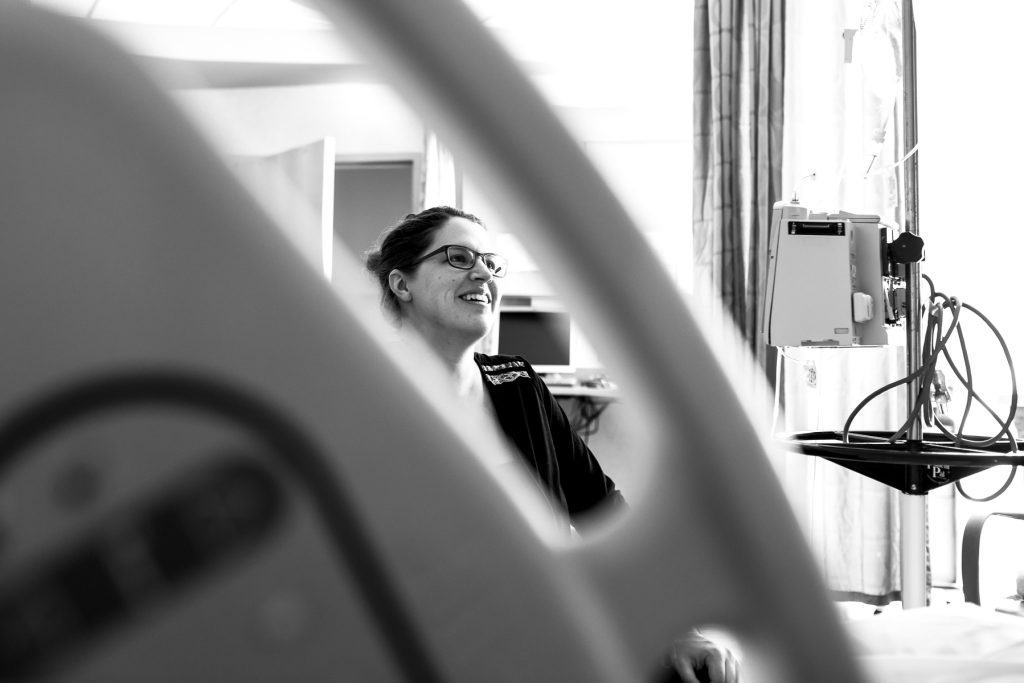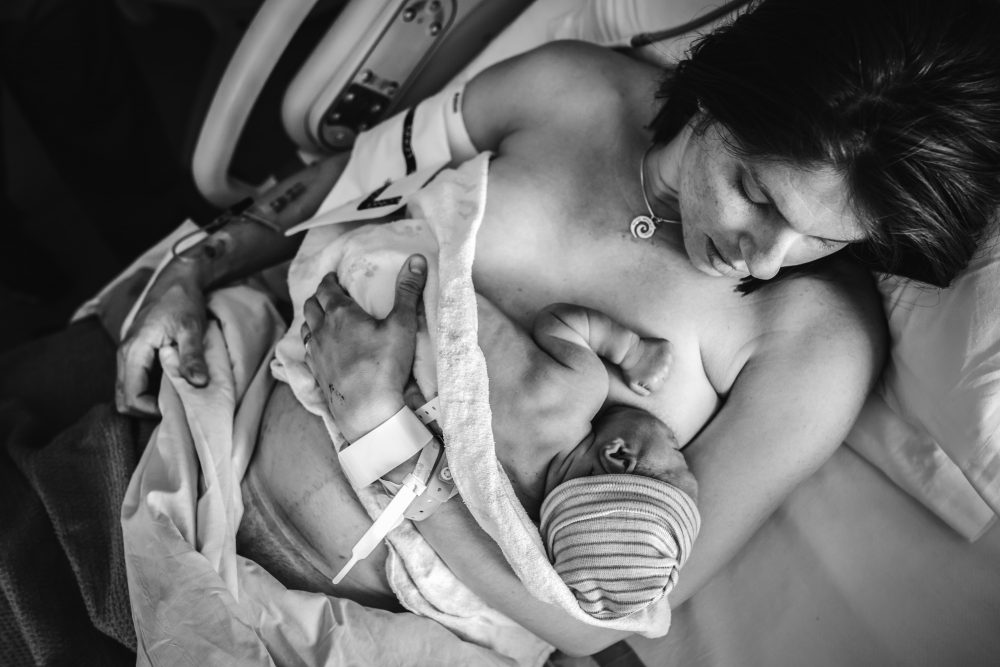Vaginal Birth after Cesarean
Making the choice to pursue a VBAC (vaginal birth after cesarean) is a hard decision to make. Many women may desire a VBAC but find themselves at odds with family members, partners, care providers, friends, and even society as a whole. There is so much misinformation out there, outdated practices being staunchly defended, and fear floating around the topic of VBAC that it can be overwhelming for even the most determined of mamas seeking a VBAC. In this post I would like to address some of these roadblocks and provide solutions for overcoming them as well as some tips for increasing your chances of achieving a VBAC.
Find Local VBAC Support
As a VBAC mom myself, the very first thing I would suggest to anyone considering a VBAC do is find support. You will need it. There will be plenty of people telling you why you shouldn’t opt for a VBAC. You need to surround yourself with people who support your decision to VBAC and will be there for you. While considering going for a VBA2C with my third child I was introduced to ICAN, International Cesarean Awareness Network. My local ICAN chapter provided me with the support, resources, and information I needed to make this hard decision and to educate myself to make informed choices for me and my child.
You can find a chapter local to you through their website, as well as lots of other resources for information regarding VBAC and cesarean recovery and support. ICAN is also on Facebook and Instagram. Search online for encouraging VBAC birth stories, and of course, listen to The Birth Hour for stories from women who have had every type of birth you can imagine—you can find VBAC stories here. Hearing other women’s experiences is an incredible way to learn so much about birth and find other women who have had similar experiences to yours as well as those who have had the types of birth you might desire.
Find a VBAC Supportive Care Provider
Achieving a VBAC is dependent on many things other than you and your baby’s health. Who you choose as your care provider, where you choose to give birth, and who you choose to have with you make a difference. A recent Consumer Reports study found that one of the most important factors for whether a woman will have a cesarean or not is where and with whom she chooses to give birth. Cesarean rates vary drastically from hospital to hospital and care provider to care provider. Research the options in your area. Ask other moms, ask doulas, ask your care provider about the cesarean rates for the hospitals and birth centers available to you.
Evidence shows that for healthy low-risk pregnant women, care provided by professional midwives reduces the risk for cesarean section when compared to care provided by physicians for a similar group of women. Family physicians also have a lower rate of cesareans compared to obgyns. Explore the idea of home birth. Connect with home birth moms in your area to find out the reputations of local home birth midwives. This is an area where your local ICAN chapter can be a tremendous amount of help. The chapter leaders and members will know which care providers are truly VBAC supportive as opposed to those who are only VBAC tolerant. They will be able to direct you to cesarean rates for local hospitals and you can ask other moms their experiences with specific doctors and midwives.
Once you have an idea of a few possibilities for care providers, call and set up a consultation appointment and interview them. Most doctors and midwives will see you for a consult appointment for free, but be sure to ask prior to booking. I was so nervous interviewing the two doctors I was considering for my VBA2C, what if they thought I was being rude? Who was I to question them? They were the ones with medical degrees! But my husband pointed out that WE were hiring them. WE would be paying them for their time and expertise and placing the care of our child and myself in their hands. We were entitled to ask a few questions. And he was right. Both the doctors we interviewed were completely welcoming of my questions and encouraged me to ask away.
A wonderful list of questions to use when interviewing a care provider for a hospital or home VBAC can be found here. I printed this list off and took it with me, don’t try to wing it!
Another thing to consider is when you will start this process. Many women choose not to start looking for a supportive provider until they are already pregnant. By then you are on a clock, you need to begin prenatal care and you can start to feel rushed. So often I hear of women who go ahead and go see their current provider just to confirm pregnancy and get things going with plans to switch later. Choosing to switch from a provider you may actually really like but who doesn’t support VBAC is difficult enough, but doing so after seeing them once or twice during a new pregnancy is even harder. Consider beginning this process prior to conceiving if possible. You won’t be on a time crunch and you won’t be in the throes of first trimester hormone surges! You will be giving yourself the time to make an informed decision that is the best one for you and baby.
Books We Recommend
Birthing Normally After a Cesarean or Two
Cut, Stapled, and Mended
Hire a Doula with VBAC Experience

A doula is a person who is trained to assist women during childbirth and who may provide support to the family after the baby is born. A doula does not replace your partner. A doula does not provide medical advice. A doula does not tell you what to do. A doula rocks. My husband thought I was wacko for wanting someone we barely knew to be there with us during labor and delivery but was willing to go for it since I was so adamant about it. Within hours of our first VBA2C baby’s birth he stated that our doula’s fee was the best money we spent the whole nine months of pregnancy. Studies have shown that the most important thing for women to have during labor is continuous labor support from someone–whether that person is a nurse, midwife, partner, or doula, but in many instances doulas have a stronger effect than other types of support persons. Doulas wear many hats during a woman’s pregnancy and labor, but they are trained to provide the following:
- Provide emotional support
- Use comfort measures to assist the mother: breathing, relaxation, movement, positioning
- Give information about the choices before the mother
- Continuously reassure and comfort the mother (the key word is continuous—a doula never leaves the mother’s side)
- Help a mother become informed about various birth choices
- Advocate for the mother and help facilitate communication between the mother and care provider to insure there is always informed consent
- Look after your partner as well (give them bathroom breaks!), but their primary responsibility is to the mother
A good doula is like magic. They know birthing women inside and out and provide invaluable support to both you and your partner. Doula fees vary from person to person and depending on where you live, and doulas who are still training or have completed their training but need to attend a certain number of births to finish their certification often offer lower rates. You can find a doula via websites such as Doula Match or simply by asking friends who have used one.
Educate Yourself on Evidenced Based VBAC Facts
Research, research, research. Read everything you can get your hands on about birth and VBAC. Take an out of hospital childbirth education class. Attend local ICAN meetings. Talk to other VBAC moms. This is your birth and you are in charge, but you can’t run the show without knowing the facts. Learn what the accurate statistics are for uterine rupture and the difference between complete uterine rupture and uterine dehiscence. (Spoiler alert-one is dangerous, the other is not.) Arm yourself with the facts about the risks of VBAC. The risk of uterine rupture after one low transverse (bikini) cut cesarean is about 0.5% – 1% depending on factors.
First time moms are at risk for complications that are equally serious to uterine rupture and occur at a similar rate such as placental abruption, cord prolapse, and shoulder dystocia. Check out this list of myths about VBAC. I used info gleaned from this and other articles on that site repeatedly when defending my choice to VBAC. Be smarter than me, accept early on that not everyone agrees that VBAC is a safe and appropriate choice for most women, (even though the American College of Obgyns says it is), and that it is NOT YOUR JOB to convince them that it is. Know your facts, be prepared to back up your decision with evidence but also be prepared to walk away.
Think back on your cesarean birth(s) and consider the reason you had a section. Were you induced? Induction can almost double your chances for having a cesarean. Learn more about physiological birth and how induction can affect the body’s natural processes. Sometimes an induction is absolutely necessary so learn about the different options should that need arise-not all inductions are created equally.
Oh and, physiological birth was a term I had never heard used until I was pregnant with my third child—I had to look it up. So, in case you’re like me… The website Spiritual Birth explains it well. “Natural physiological birth is an involuntary process orchestrated by neurochemicals and hormones that unfurl in a woman’s body, enabling her to give birth to a baby and make the transition to motherhood. Physiological birth is directed from within the limbic system of the brain and body in response to and in collaboration with the endocrine system of the baby and placenta… It can occur best when a mother is not disturbed during the process of labor and birth.”
Were these any of the reasons you had a cesarean?
- Did your water break but labor hadn’t yet begun? Read about your options here.
- Had labor not begun by your care provider’s ‘cutoff date’? Learn about the risks and benefits of inducing postdates here.
- Did a late third trimester sonogram show you had low fluid? Learn what the evidence says about fluid levels and induction here.
- Were you sectioned due to ‘failure to progress’? Research Friedman’s Curve, an outdated method used to determine if a woman is progressing ‘adequately’. Falling off this curve can result in being sectioned unnecessarily. The research used to develop this decades old method has been reevaluated and proven inaccurate and not supported by evidence, does your care provider still follow Friedman’s Curve? Many do. Learn more about it and the ‘failure to progress’ label here.
- Was your cesarean due to a breech baby? Learn what the evidence says about vaginal breech delivery, ECVs and VBACs, moxibustion and what your options are here and here.
- Do you have adorably squishy big babies? Did your doctor do a third trimester sonogram and estimate your baby’s weight using pelvimetry? Did this result in your being told you should induce early to get the baby out before it was ‘too big’? Or were you told your baby was already ‘too big’ and you should have a cesarean because your baby was never coming out vaginally?
The evidence does not support any of these practices. VBAC.com states that, “Research shows that routine late pregnancy screening does not improve health outcomes for mothers or babies when compared with women who do not have the screening. However, routine late pregnancy ultrasound screening can potentially increase the use of major interventions including a cesarean section.
Cesarean for Big Babies. Not Evidence-Based
Sometimes a care provider recommends that a woman be screened (by X-ray, ultrasound, computerized tomography scanning or magnetic resonance imaging (MRI) to determine the weight of her baby at birth. Based on these measurements the care provider decides whether or not the baby is “too big” to be born vaginally. This is called pelvimetry. Pelvimetry is an inaccurate method of predicting the size of the baby and cannot predict whether or not the baby will move down through the mother’s pelvis. An ultrasound screening has an error margin of 10% to 20%. Women who have pelvimetry are more likely to have a cesarean, but there is no evidence that the health outcomes of babies are improved. Medical experts state that pelvimetry should not be used to make decisions about a vaginal or a cesarean birth.”
Learn what the evidence says about ‘big babies’ here.
Did you have an epidural or other pain meds? Do you want them again? Learn about the risks and benefits of common pain management and their effect on the labor process. Did you get to the pushing stage but baby wasn’t descending well? Was your baby posterior? Research the use of chiropractic care in optimizing pelvic stability and baby’s positioning. Were you told your pelvis was too small to allow a baby to pass through? True cephalopelvic disproportion is very rare and can require imaging to properly diagnose. Learn more about the possibility that you have CPD before giving up on the idea that you can birth a baby vaginally.

You get the idea. Learn more. Ask questions. Know your options.
Vaginal birth after cesarean is not right for every mom, but neither is a repeat cesarean. Women deserve the right to make their own informed decisions about how they give birth. If you decide that VBAC is right for you—surround yourself with a support system that will encourage you and be there for you. Connect with other VBAC moms and find a group such as ICAN that can provide the support and resources you need. Find a supportive provider and vet them carefully. Hire a doula to support you and your partner during pregnancy and birth. Arm yourself with accurate information and learn everything you can about labor and birth. Around 75% of women who attempt a VBAC will be successful, prepare yourself and your partner in the best ways you can to increase your chances of achieving your VBAC goal. Women do it every day and you deserve the chance to as well.
This guest post was written by Elizabeth Quinn. Elizabeth and her husband, Percy, live in Jackson, Mississippi with their three daughters one son. She had two cesareans followed by two vba2c’s. Elizabeth serves as the chapter leader of ICAN of Jackson, Mississippi and advocates for evidence based care in maternity healthcare through her volunteer efforts within the birth community there. She is passionate about being educated about birth and helping women who have had cesarean sections to know their options.

No Comments yet!